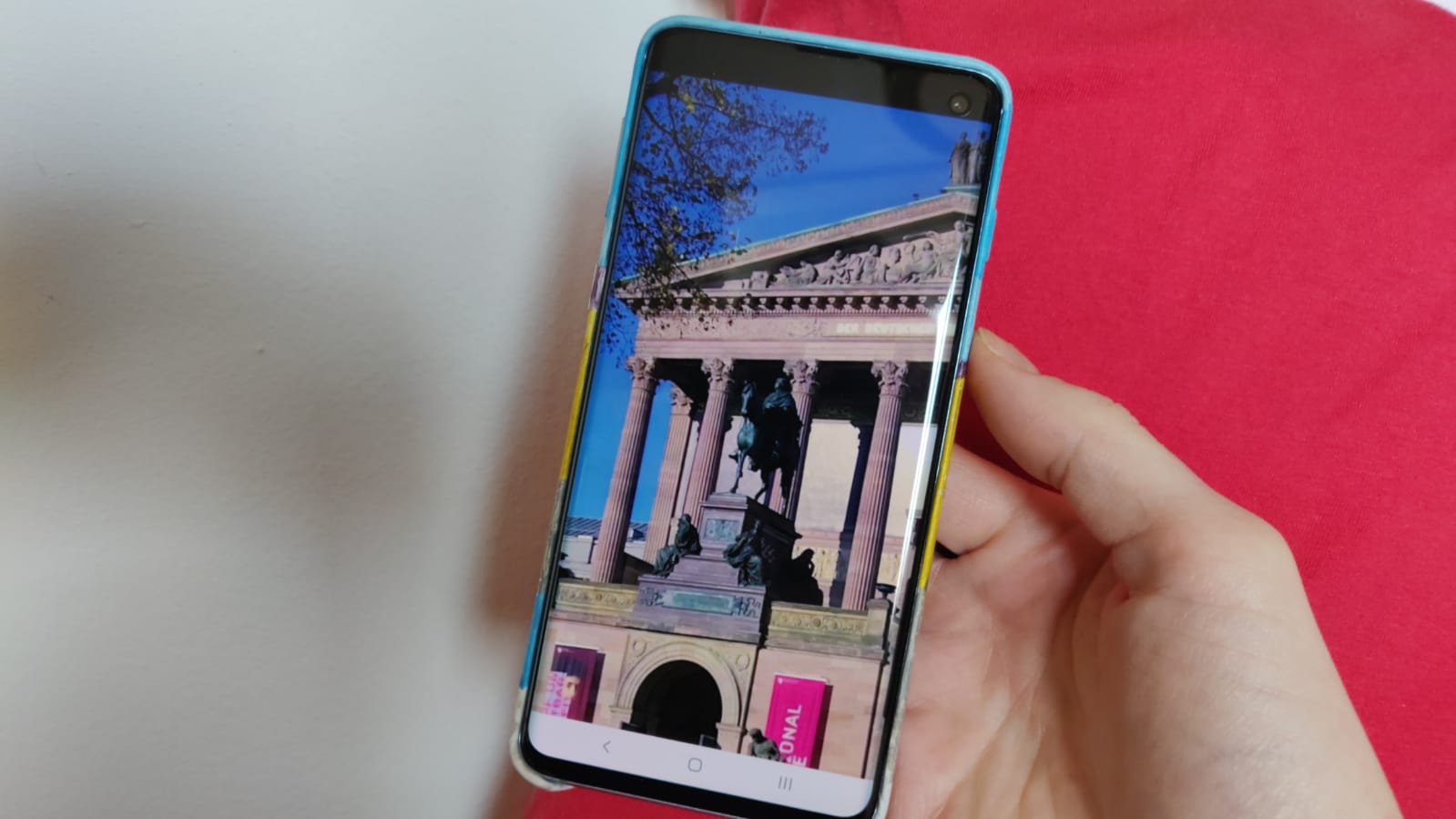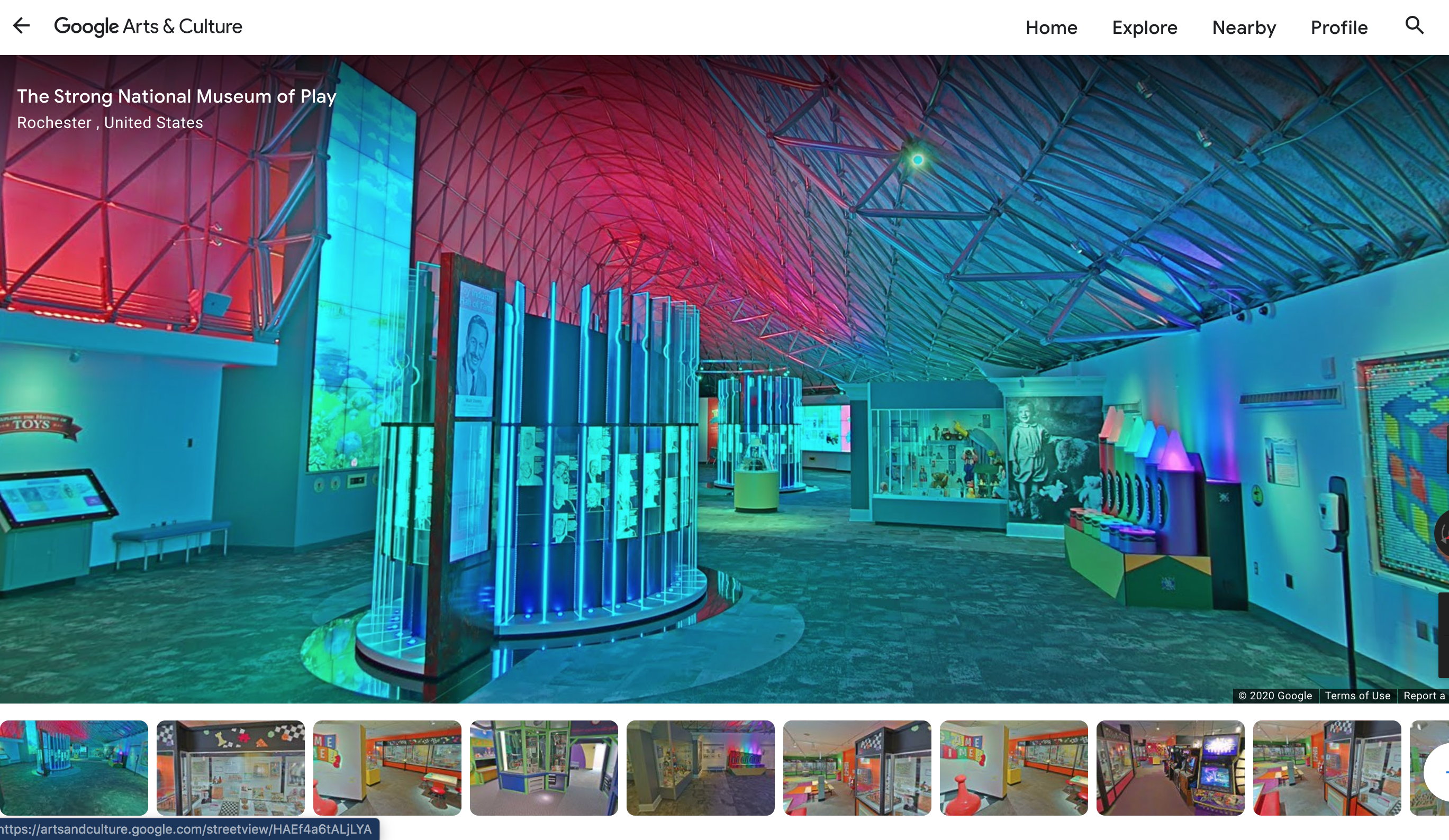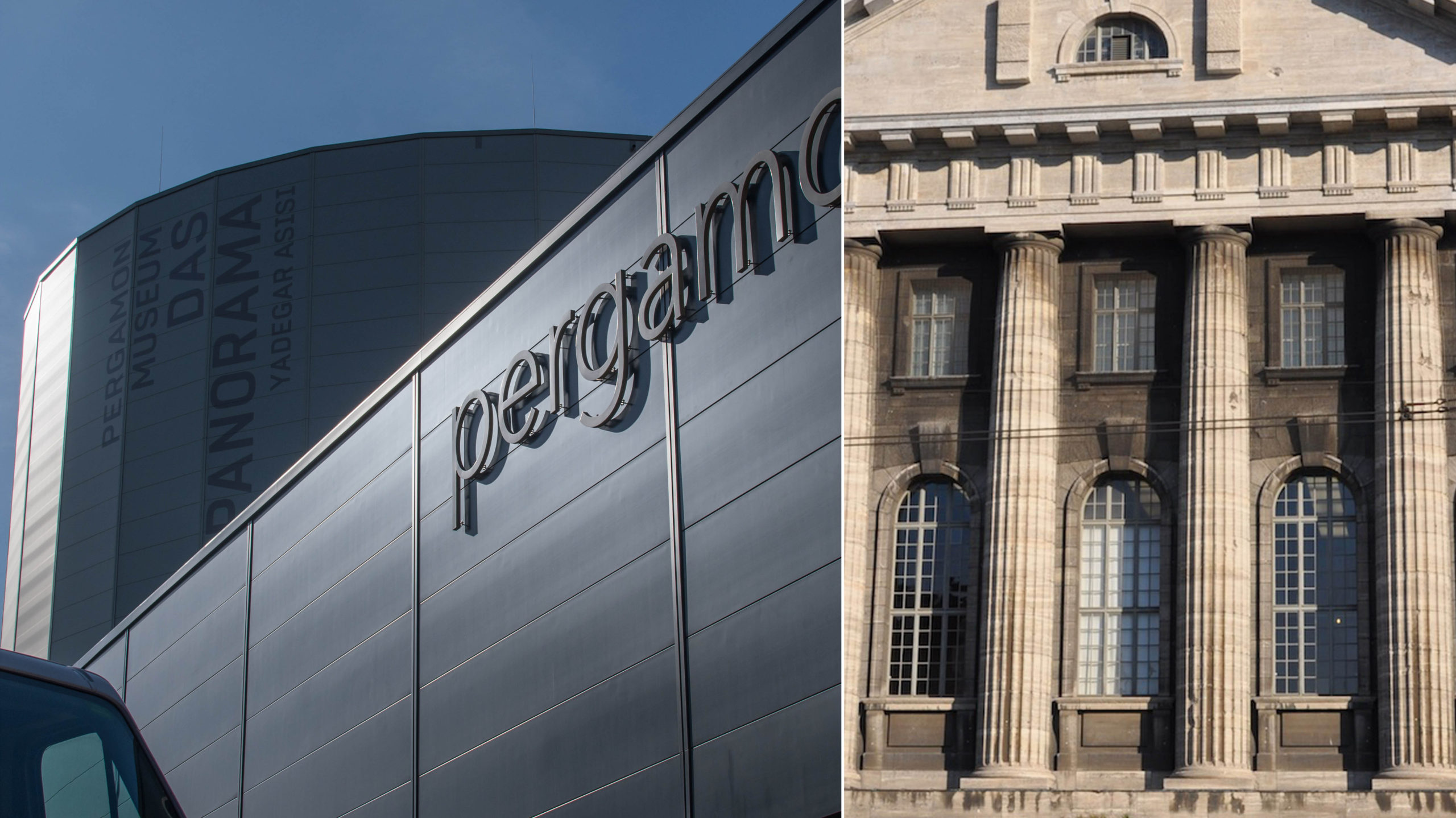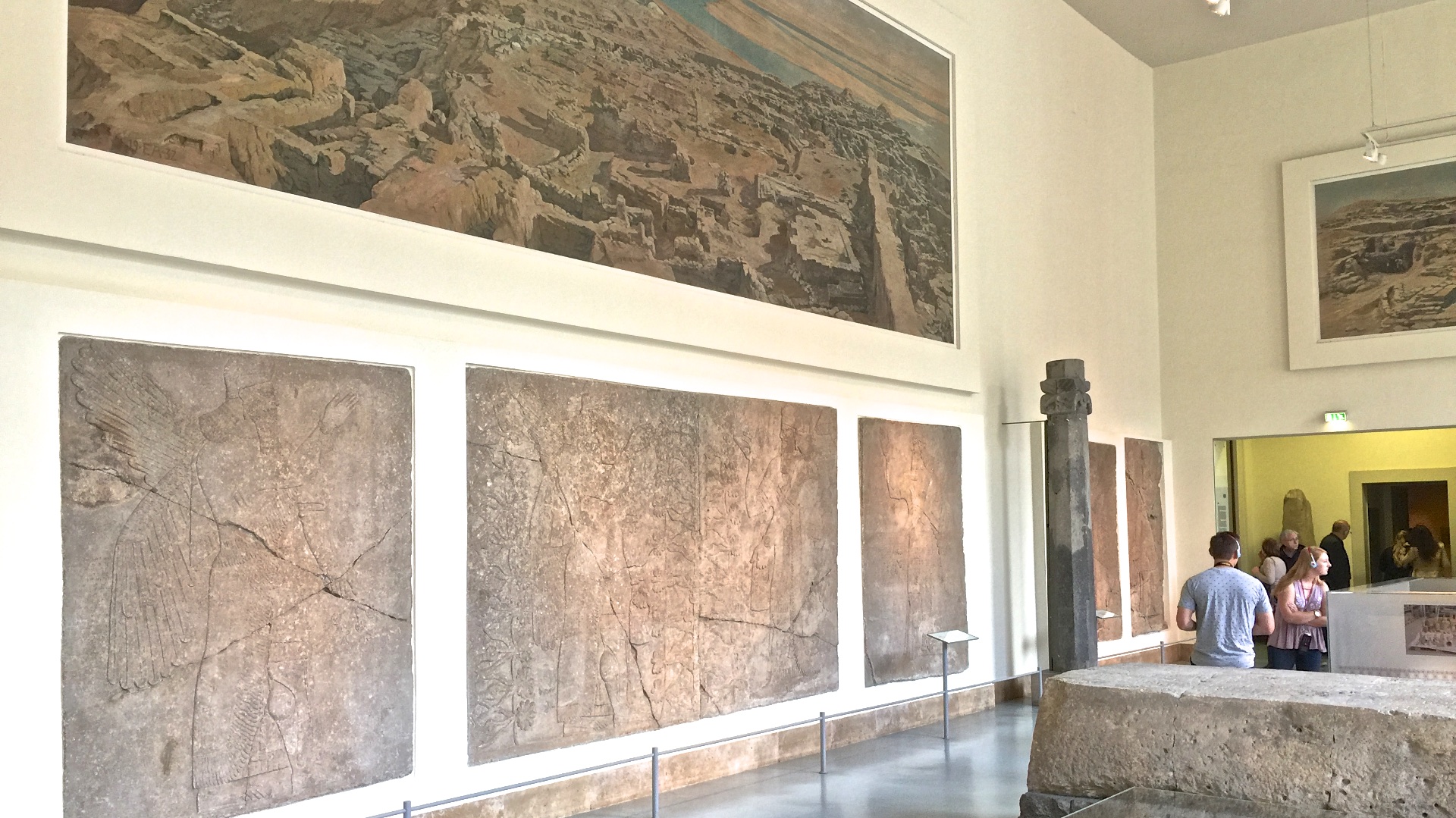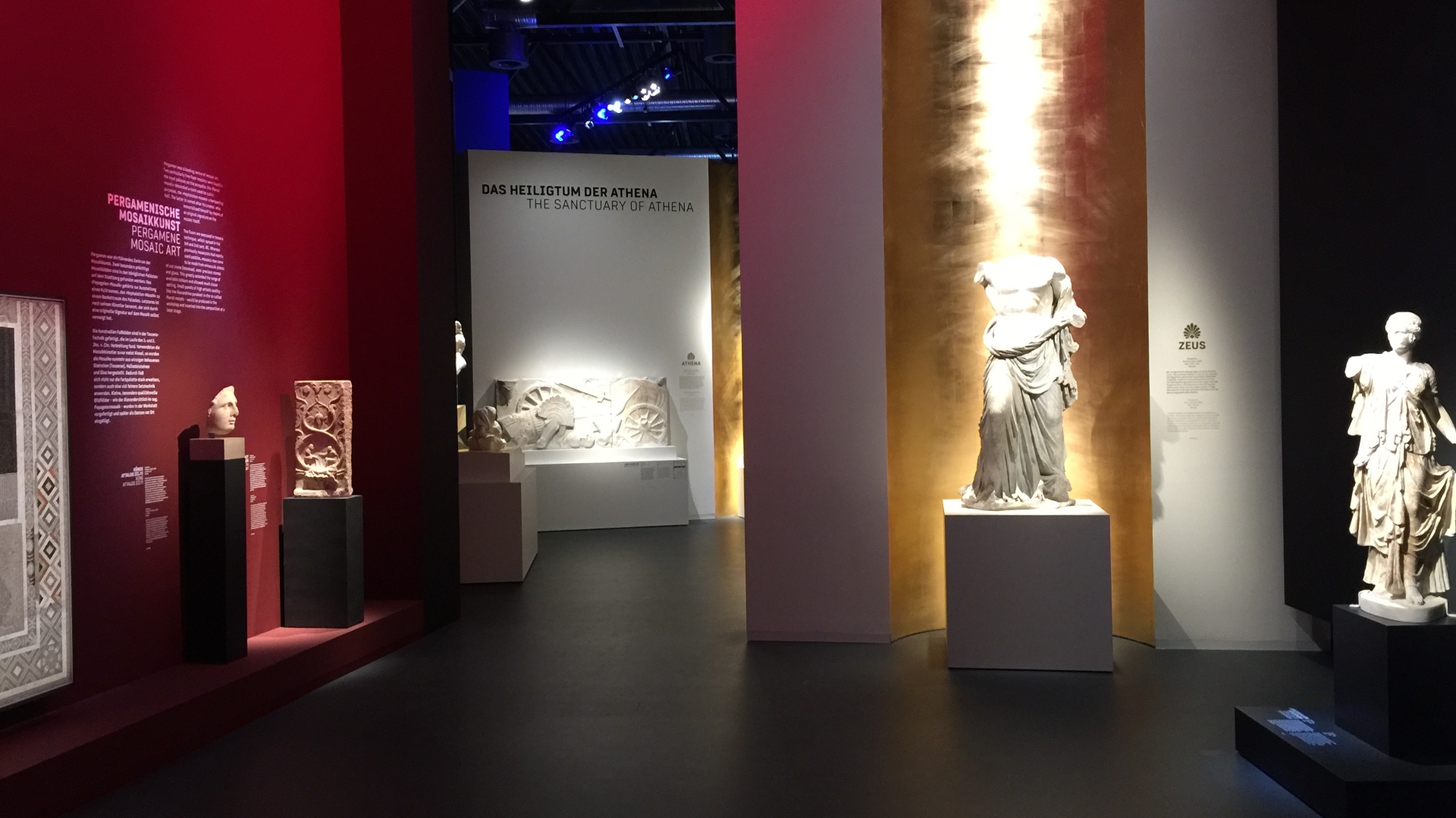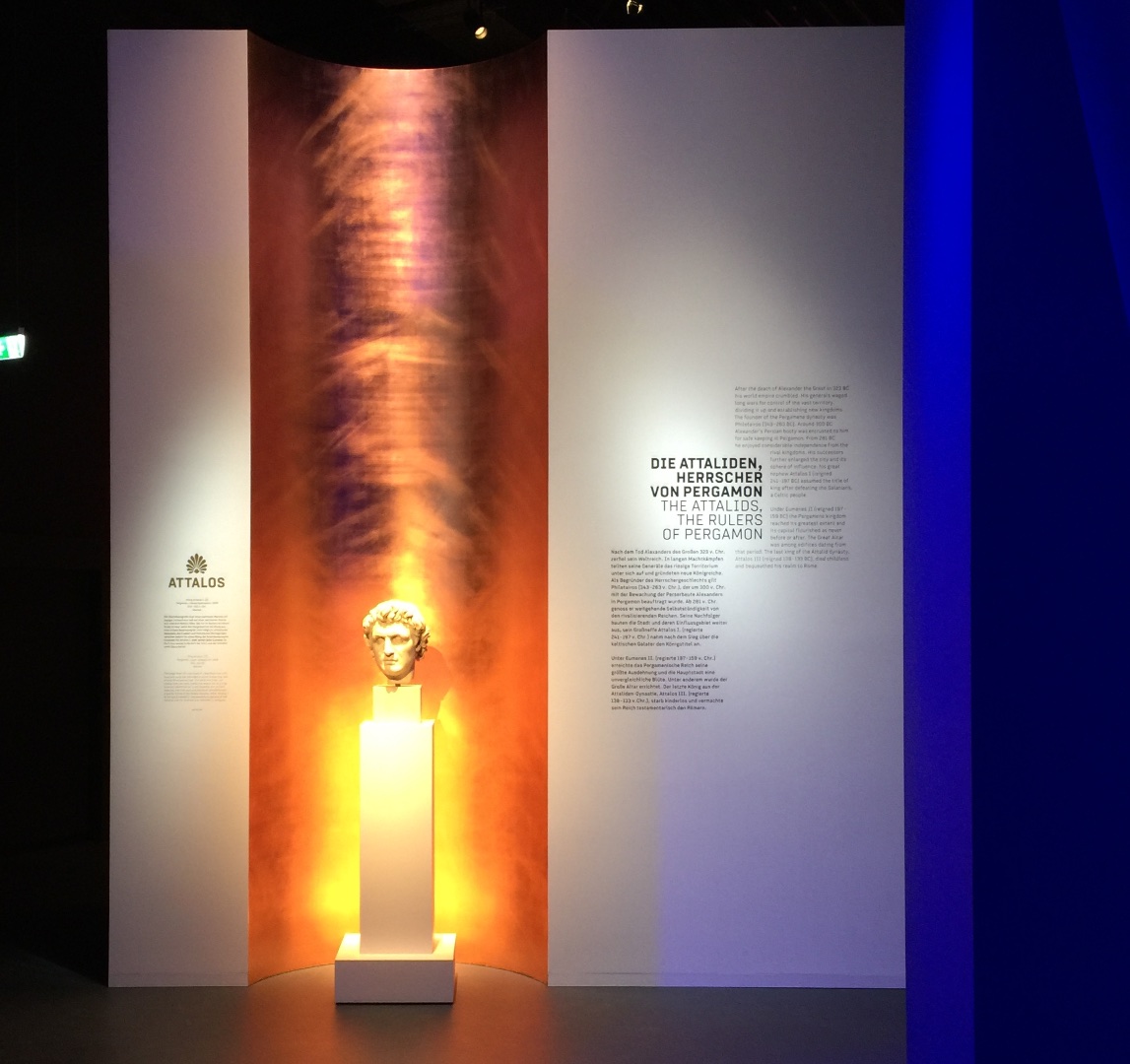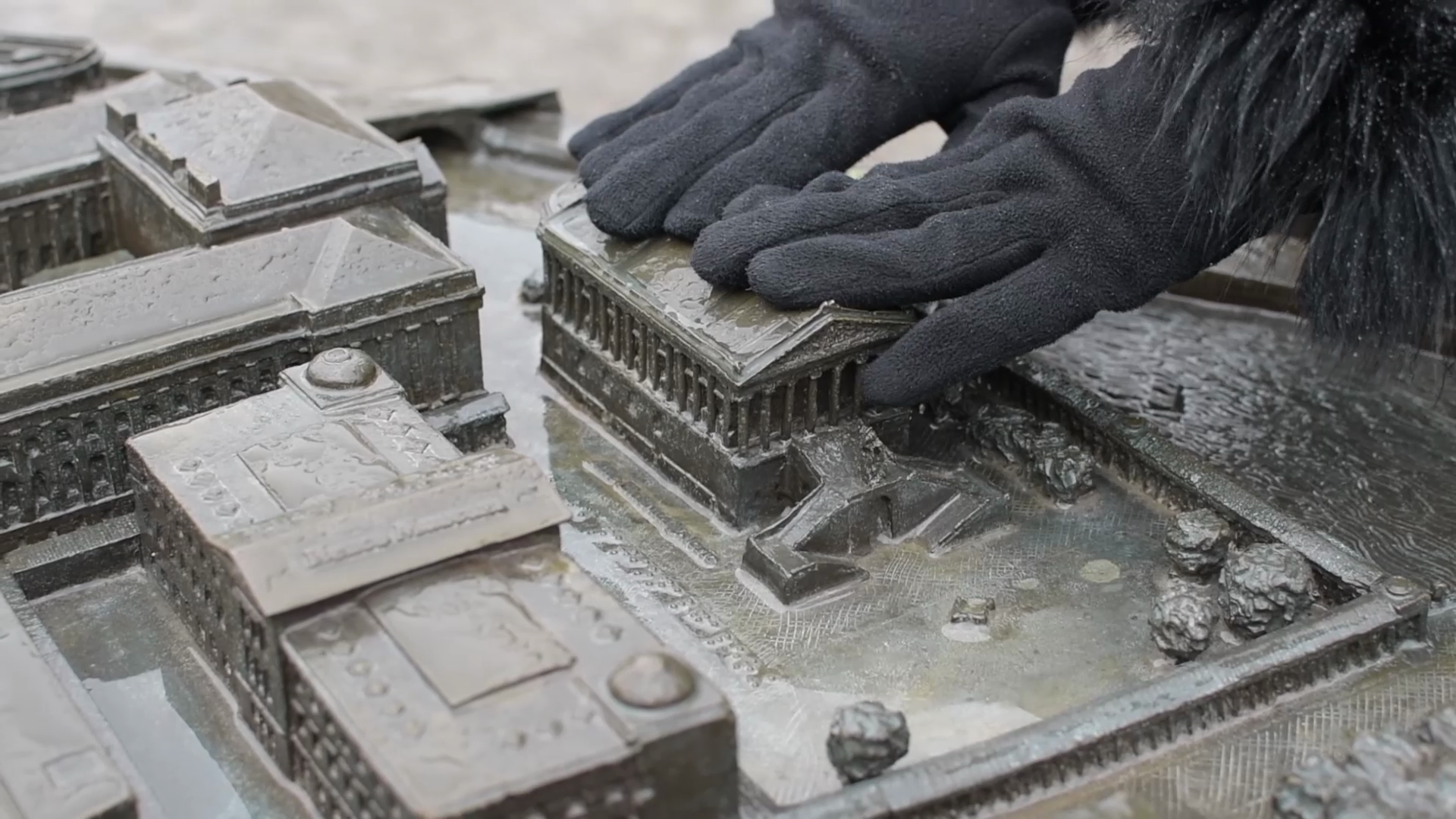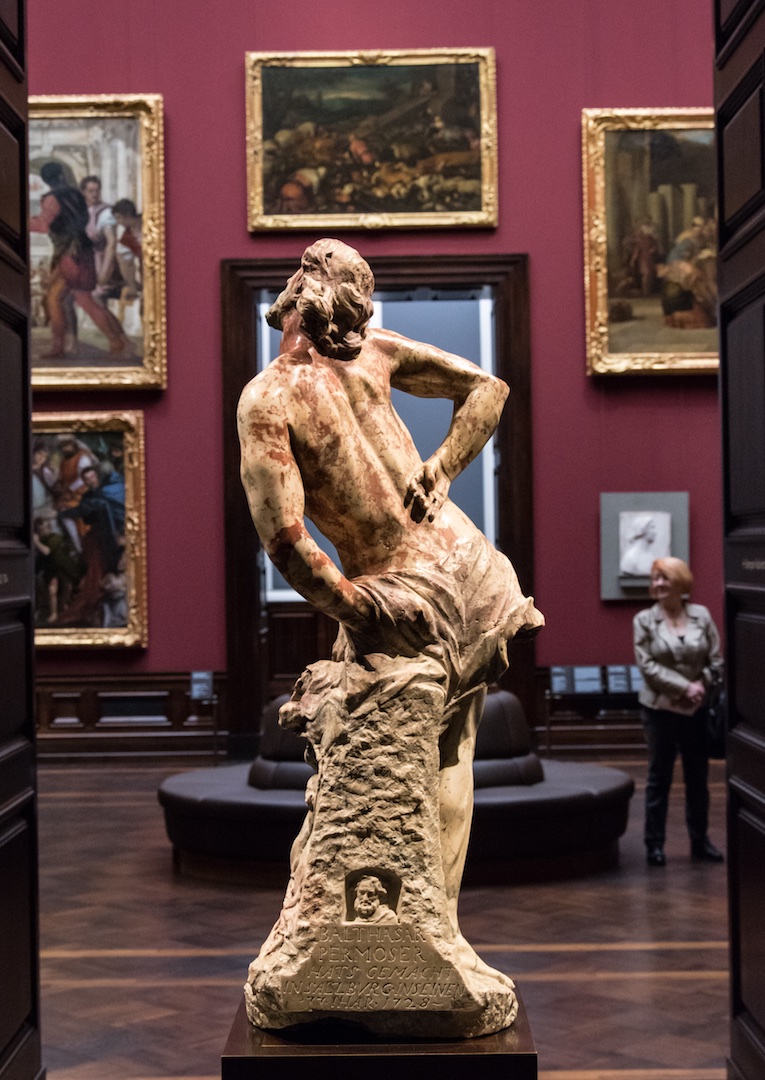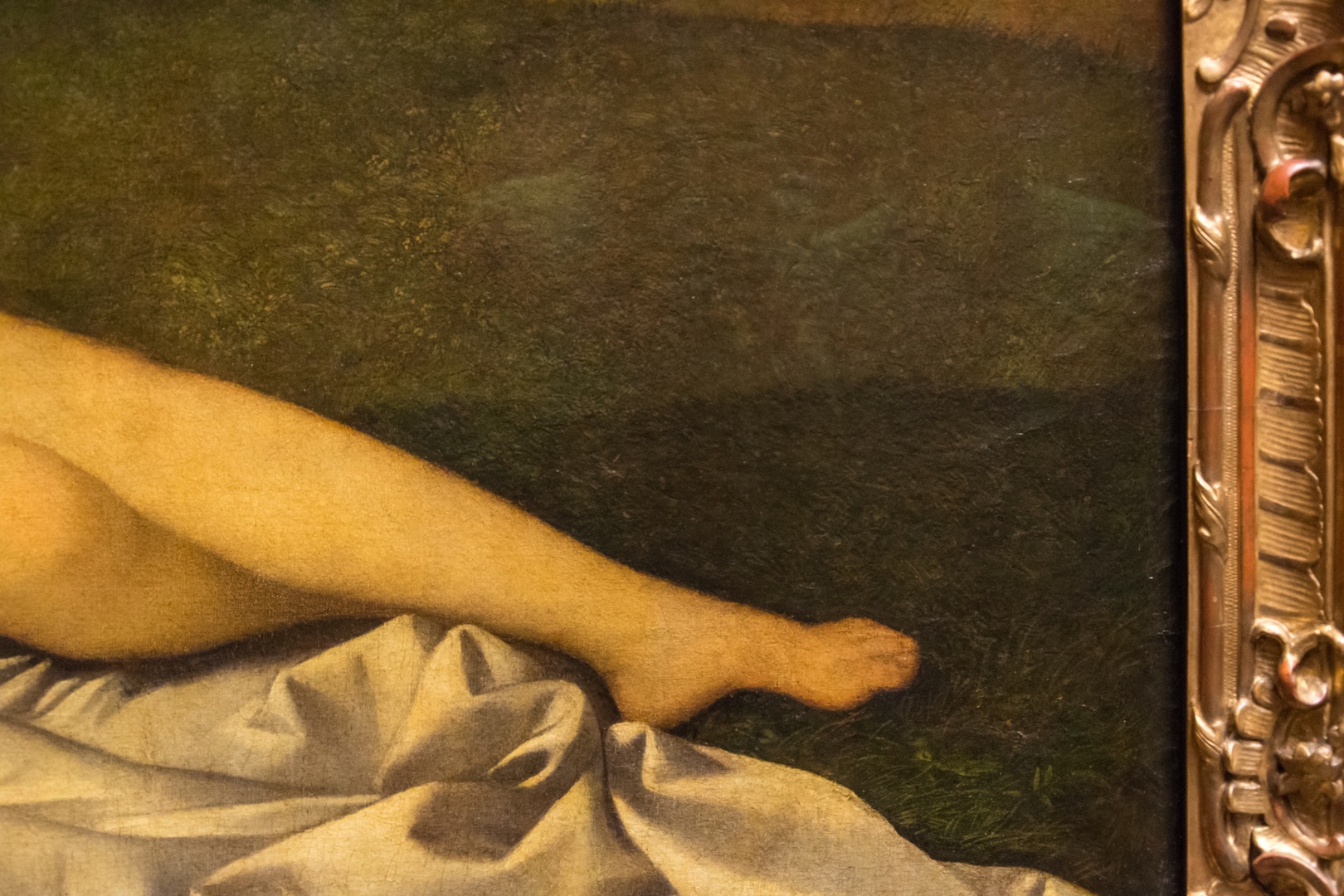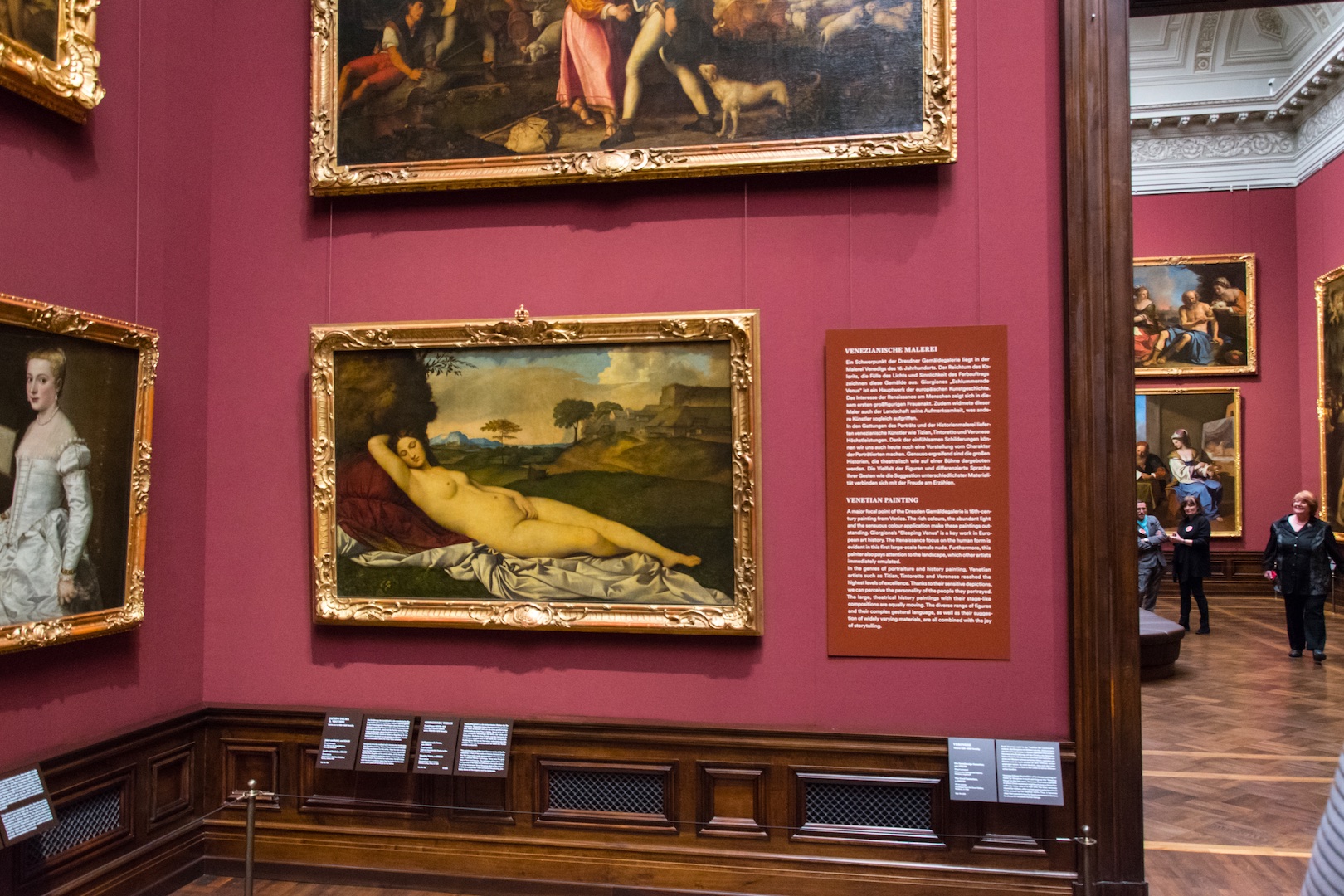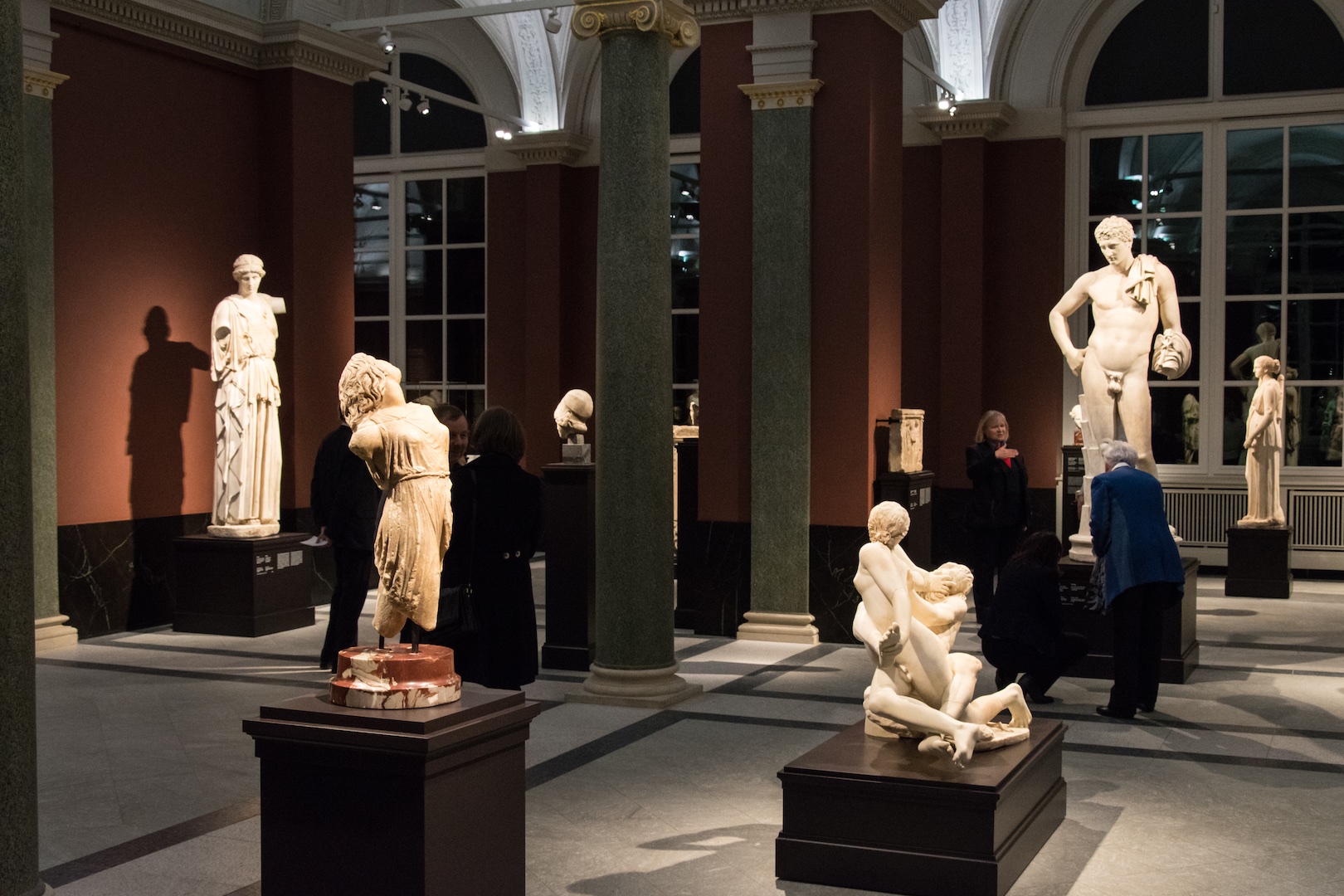The hugely variable virtual museum tour
Today we continue our adventures in online museums! See my recent list of some favorites, paean to Google Arts & Culture, and pre-#MuseumFromHome list of online exhibitions.
In the current surge of online museum offerings, “virtual tours” and the like are being touted by ever more institutions. But what does that mean? It turns out that everyone has a slightly different idea of what a virtual tour is. My last couple of blog posts show that I’m a sucker for one specific kind of “virtual tour,” that found on Google Arts & Culture: a combination of “street view” navigation through the actual museum galleries, along with object-specific detail photos and information. To me, this represents just what I like about museum visits in person, in a pretty great digital approximation: you experience some of the museum atmosphere, see how the objects are displayed (a longtime obsession of mine!), AND you can get up close to the objects and read their labels, just like you would in real life.
But there are other ideas of what a “virtual tour” can be. Some institutions offer “tours” that are just 360º walk-throughs of the building. The Smithsonian, for instance, has several dozen of these, which I was excited about until finding out what they actually are. On these tours, you may get an all-around view of the galleries, but you can only get as close to an object as the “street view” image allows, and generally this feels like you’re standing at least 8 feet away from the object. (The Smithsonian website notes that you can click on a camera icon to zoom in on an object, but throughout numerous galleries I didn’t find such an icon.) So you can’t really see any object beyond its most prominent features, and you definitely can’t read any label that might be next to it! It’s also frustrating to try to navigate closer to a display that’s caught your eye: the 360º image just doesn’t allow fine enough movements to steer effectively. There’s one single line you can “walk,” and you can look around as you go. In summary, this model frustrates me because it omits the one thing that I would say museums are primarily here for: the objects. This is why I find it so crucial that Google Arts & Culture combines Google’s revolutionary Street View imagery with incredible high-resolution photos of and essays about certain objects. Because why would I want to stroll through a museum without being able to see and learn about the exponents?
The National Museum of Computing offers virtual tours somewhat along the street-view-plus-objects lines, and should definitely get props for that! In this version, there is one additional benefit and one additional drawback. The benefit is a super cool “dollhouse” of the museum that shows you all the rooms in miniature, complete with their objects! This is an awesome way to get an overview of the museum, and to see where you’re standing in the virtual tour. The downside I discovered is that generally there is only little information on offer; certain objects are marked with a YouTube link to a relevant video, which is really neat, but even basic object information isn’t included. Or the link goes to a website that can’t be found. Or just the object name appears (what are Dekatron Valves?).
Yet another model is totally different and, in my opinion, mind-blowing! The British Museum teamed up with Google to make a beautifully designed, 3D graphic timeline called The Museum of the World (a title that aligns with the BM’s controversial aspirations to be a universal museum). You can zoom along the timeline from today into the past, on a foreshortened path like a road receding to the horizon. Each continent has its own color and position on the timeline, so you can compare across cultures or select just one. It’s a very effective, attractive design. Colored points on the timeline represent objects you can click on to get more information. And this too is superbly done: clicking on the object pops up a window with a photo, short essay, Google map of its location of origin, “related objects” section, and an audio file of a staff member talking about it! This is a truly fun and fabulous mode of discovery.
Then there are the tours that require technology I don’t have. The Louvre lists a number, but they require some kind of Flash that none of the various devices and OSes in my home has.
Finally, there are tours led by real people in museum galleries and posted online as a video or streamed on a communication platform like Zoom. I took part in a tour offered by the Schirn Kunsthalle Frankfurt – it was tremendous. Personable, knowledgeable guide Sonja took us around the galleries of the exhibition “Fantastic Women” just like on an in-person tour, using her smartphone to record herself as she was talking and the objects she was talking about. I was astounded how much it was like being in person at this beautiful exhibition on women surrealist artists. I hope many more museums offer this version of a virtual tour, even after the museums reopen!
There are some amazing things happening in the land of online museum experiences! To help it progress, I’m in favor of using the word “tour” to describe something more than just a 360º image. Tours, as well as the museums that offer them, are so much more than just a building you can photograph from inside.
Please share your own favorite online museum experiences on the Forum or the Contact page!
Museums go online! Favorite sites
In the last post I waxed poetic about Google Arts & Culture as an Ali Baba’s Cave of Wonders for Museum Lovers stuck at home. (And even before the #stayhome days, I made this list of online exhibitions!) Now I’d like to share some of my favorite other online museum sites with you – and I’d be delighted to hear about your own favorites on the Forum or the Contact page!
- Dallas Contemporary‘s online program #DCfromHome includes an awesome set of at-home art activities for the young-at-heart. Glittery slime is on the top of my to-do list! The guides to analyzing of two stunning artworks together (with kids or anyone else!) are fantastic.
- Smartify: devastaingly cool app. While it can do the party trick of scanning an artwork and telling you what it is, it’s SO MUCH MORE than that. My favorite thing are the free tours: Mary Bead takes you through the Royal Academy collection in London, artists narrate slideshows of their own work – it’s incredible!! This Guardian article mentions a number of tours and exhibitions that are now free on Smartify.
- How about the old-fashioned telephone? I just love this idea by the Museum Catharijneconvent in Utrecht, based on their current exhibition about miracles (in Dutch): call their number to hear about a miracle that happened to a staff member – or to request a miracle!
- The Frick Collection in New York lets you walk through the museum virtually, and click on artworks along the way to see more information and immensely detailed photos of them! Similar to the Google Arts & Culture format – I’m a total sucker for this.
- Kennedy Space Center Visitor Complex in Florida has a series of wonderful short videos on their Facebook page: interviews with astronauts, videos of rocket launches, and more. My favorite are the mini-tours (between 3 and 10 minutes long) led by their upbeat Educator Stephen. He’s great! Check out this new one on moon rocks!
- The American Museum of Natural History in New York also has a stupefying array of videos and virtual tours on their Facebook page. Get lost in the giraffe dioramas or watch a video on the history of primates!
This is just a small selection of my personal faves; I’ll post more as I keep exploring. Let me know about your own favorites on the Forum or the Contact page!
What are your favorite digital museum resources?
As we all #stayhome these days, museum websites and other online offerings are becoming more important than ever. What are some of your favorites?
The closest thing to a real museum visit: Google Arts & Culture
I can hardly express how excited I am about Google Arts & Culture, especially in these stay-at-home times. And no, this is not a paid advertisment! I really am just that impressed. It’s just got so many advantages, it blows my mind. For us Museum Lovers, it is a treasure trove.
What is Google A&C? It’s a website that contains collections of all sorts of amazing cultural material. For example:
- You can explore the “Historical Figures” category, in which clicking on a person of your choice opens a photo and short introductory essay, as well as a picture gallery of related material.
- You can visit incredible culture heritage sites around the world in Street View mode! Check out Petra, where you can stand right in front of the famous Treasury that starred in Indiana Jones! The Taj Mahal is another beautiful Street View site.
And, most relevant for Museum Lovers’ purposes, it’s got an astounding array of museums that you can virtually visit. These virtual visits are so beautifully crafted, I don’t know anything even close to this good anywhere else online. Individual museums just don’t have the resources to achieve the sort of wide-ranging and perfectly integrated experience that Google A&C offers. What do I mean? well…
- The number of museums you can visit online is big, and getting bigger. Currently there are 46 world-class museums on the roster. Even one of these can occupy you for hours on end; visiting all 46 online would take months!
- The format seamlessly integrates Street View mode inside the museum (this totally blows me away) with luscious, high-resolution photos of individual artworks. It is SO COOL to be reading about an object and looking at the photo of it, and then to click on the “View in Street View” button to see how it’s displayed in the museum. While this isn’t available for every object, it is an AWESOME feature; it’s what I would call as close as you can get to a real museum visit!
- Did I mention the luscious photos? They are breathtaking. The quality is phenomenal – you can zoom in for days! Take this miniature painting in New Delhi: you can count Krishna’s eyelashes! I suspect that Google A&C took their own photos of the objects in many cases, because this is a quality that most museums just don’t have lying around their image archives (with some notable exceptions like the Met – hello, pinhead-size gold granulation!).
- Each highlighted object – not all the objects in the museum, nor all the ones you can see in Street View, but a selection of highlights – is accompanied by an excellent short essay about it. In the Strong National Museum of Play, for instance, a James Bond video game for Commodore 64 is explained within its historical context (who knew??). The information presented in these essays is, as far as I can judge in my areas of expertise, not only correct (short of a few typos I’ve seen), but accessibly written. I wonder who writes these; is there a staff of trained cultural historians back at A&C HQ writing these things?
This is all to say, Google A&C offers an unparalled online cultural experience. I even used its excellent presentation of the Altes Museum in Berlin in a question on a take-home exam for my university students. (“Select two of the statues exhibited in the Altes Museum’s rotunda, shown in the digital exhibition by Google Arts & Culture. Discuss how the statue portrays the god or goddess in connection to what you know about the divinity’s realm of influence, powers, and attributes…) While there are some other great online initiatives from museums now – ramping up in the current flatten-the-curve era – Google A&C is my favorite for the above reasons. A selection of some of my other faves will appear in the next blog post.
Take a gander yourself, and have a ball!
Two Pergamon Museums in Berlin?
When you visit Berlin, one of the biggest stops on the tourist circuit is the Pergamon Museum. It’s Germany’s most touristed museum, with 1 million visitors per year! But if you go today—and for the next few years—you can visit not just one but TWO Pergamon Museums. While the historic museum building is being renovated and expanded (it was never fully renovated after being bombed in the Second World War, and didn’t even have a climate control system!) there is an interim Pergamon exhibition being shown in a new building across the street. This new building is confusingly called “Pergamon Museum. The Panorama.” This exhibition includes a Panorama by the artist Yadegar Asisi, as well as an eye-popping display of ancient art from the Greek city of Pergamon. So with one ticket, you can go into two buildings to see some spectacular stuff!
The two buildings house very different presentations, so seeing both of them gives you a look into the spectrum of possible museum display styles. The historic building (entered through the James-Simon-Galerie; see our video for tips!) houses a traditional display of the objects. Check out the photo below: neutral-colored walls, text on white paper labels, and some historic murals of the archaeological sites painted by the wife of the excavator. The objects may be fabulous—my favorite hidden gem is the subject of the next video—but the display is neutral.
In contrast, the Asisi display is theatrical! See the photo below: brightly-colored walls and lights, gilded surfaces, black floors and ceilings. The objects pop out like actors on a stage.
See much, much more in our video, and others on our YouTube channel: Click here
You visited these museums too? Leave a review! Click here for the new show with the Panorama, or here for the historic building.
What's on Berlin's Museum Island? Our new Video!
Not even icy rain could keep us away… although it did result in some hilarious outtakes! We just had to make this new video for you. You know that Berlin’s Museum Island is the tourist center of the city, but do you know which museum houses which collections? And how the museums can be understood as a product of their time? Our short intro clues you into the big picture. Upcoming videos will show you the individual museums, as well as some pro tips for visiting them. Check it out! Click here
Explore even more on our YouTube channel: Click here
Did you know that the Pergamon Museum is temporarily split across two buildings? Confusing. We’ll tell you more in a video. For now, see our pages on the historical museum (click here) and the new interim building with a special exhibition (click here).
Dresden Sculpture Collection & Old Masters Picture Gallery
From Greece and Rome to Raphael and Rubens
Official website: Click here for sculpture or here for paintings
Masterpieces from antiquity to 1800 are shown off in a new installation that opened in February 2020. Displayed in part of Dresden’s historic palace complex, directly beside the famous and imposing opera house, these art collections are not only stunning but deeply embedded within the city’s historical landscape.
Click on the stars to rate this museum.
Our users average stars:
[yasr_visitor_votes_readonly=”yes” ]
Opening Night for Dresden's Sculpture and Painting
With plenty of fanfare—speeches by bigwigs, a live-streamed concert on a huge screen, and a line around the block—the Dresden Sculpture Collection and Old Masters Picture Gallery opened on Friday after 7 long years of renovation. Quite a celebration; of course we didn’t want to miss it!
Loaded up with camera equipment and special entry cards (our VIP dreams come true…but why are we still lugging our own equipment??) we stalked the galleries documenting the displays. Not to mention having a lot of fun in the festive atmosphere! There’s no better see-and-be-seen crowd than Museum Lovers, amiright? Feathery jackets, plastic pants, and enough fabulous jewelry to be an exhibition in itself!
Guides were stationed in some of the rooms to talk with the visitors, a great touch. One of them clued us into a secret about the ultrafamous Giorgione painting of Venus: X-rays have revealed that a little Cupid used to be beside her feet, where now there is just grass (see photo). I wish that were in the museum label—it’s such a cool tidbit.
Check out our video about the opening night and these collections: they are truly beautiful, and we’re just pleased as punch to be able to show you!
Watch this video and others on our YouTube channel: Click here
You visited this museum too? Leave a review! Click here



